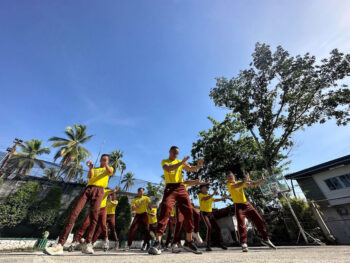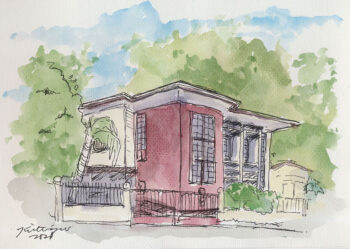I. Unity: Heart of the Issue
GENERAL SANTOS CITY (MindaNews/ 28 March) — How shall Bangsamoro be established? As gleaned from two MindaNews reports (3/7/17: Will federalism hold the Bangsamoro hostage?) and (3/8/17: Moro groups race with time, grope for ‘convergence’ on peace agenda) this emerged as the proverbial “hard nut to crack” during the two-day meeting in Davao City, March 4 and 5, of the Insider Mediators (IM), a discussion group on Bangsamoro.
And, for an answer, the Moro leaders have limited time to pursue the only option. To realize the dream they have pursued with “blood and tears” for the last forty years and more, they must unite and stick to “BBL* first, federalization next” as the only way. That is the logical inference from the IM discussions corroborating similar inferences from other fora and sources and appeals from non-Moro peace advocates.
*[NOTE: The New BTC and MILF are sticking to “BBL”, for Bangsamoro Basic Law. “BEL”, for Bangsamoro Enhancement Law, is the term used in the Bangsamoro Peace and Development Roadmap — meaning “BBL” after convergence as mandated in the BPDR. In Executive Order No. 08, s. 2016 creating the New BTC, the term is “BBL”; President Duterte has been using “BBL” in his speeches; Senate President Pimentel used “BBL” in his interview with MindaNews; and national media use ”BBL”. Of course, “B” for “Basic” says exactly what the “L” for “Law” is’; “E” for “Enabling” is vague if not blank. To be consistent, we will use “BBL” a.k.a. “BEL”. If necessary for distinction, we will refer to the original BBL as “Draft BBL”; to the converged, as “New BBL”. We suggest, the New BTC officially clarifies.]
Is IM new or just ad hoc? Whatever, it lends urgency to the Bangsamoro issue. The MN reports identified it as “a discussion group on the Bangsamoro that aims to foster unity among various sectors of the Bangsamoro on the peace process with members from the Moro Islamic Liberation Front (MILF), Moro National Liberation Front (MNLF), lawyers, academicians and other Muslim intellectuals”. Some of the discussants identified are New BTC (Bangsamoro Transition Commission) members.
The discussions significantly hewed to the “hindrances” and “obstructions” President Duterte, without clarifying them in his speech at the July 24 launching of the New BTC, challenged the commissioners “to navigate”. The concerns the IM discussants depicted in the two MN reports, by Editor H. Marcos Mordeno, must also be the concerns of the Moros in general.
Two main concerns on the Bangsamoro issue were discussed which Mordeno separately reported – (1) the need for the MILF and MNLF-Misuari faction to unite (MN 3/8/17); and (2) the implications on BBL of federalization in the BPDR (MN 3/7/17).
Heart of the Issue
The first concern is a main aspect of President Duterte’s peace and development agenda: the “meaningful implementation of the Framework Agreement on the Bangsamoro and Comprehensive Agreement on the Bangsamoro towards healing in the Bangsamoro” as embodied in Draft BBL along with the “completion of implementation of (the) remaining commitments under the GPH-MNLF (Moro National Liberation Front) Peace Agreement for a just closure” — the 1996 FPA implemented to amend R.A. 6734 into R.A. 9054.
IM noted that to achieve this meant reaching out to both the MILF the MNLF and hoping the two would come up with a unified legislative proposal for lasting peace in Mindanao. And “this is where the bone of contention lies”, according to IM members. Re-stated simply, “Will the MILF and MNLF(Misuari) faction unite?” Dissecting the heart of the Bangsamoro issue can show how to diminish the “bone of contention”.
Coming up with “a unified legislative proposal” calls the MILF and MNLF to unite and present to the Congress just one proposed bill on the Bangsamoro basic law. MNLF Chairman Nur Misuari has refused to let his faction join the MILF-led BTC. There is a glimmer of hope as the IM “participants said that an agreement on convergence is still being worked out between the MNLF and MILF panels”.
Evidently, this “convergence … still being worked out” does not refer to “convergence” spelled out in the BPDR. It suggests that MILF and MNLF(Misuari) panels are trying to find a way to reconcile the CAB and the 1996 FPA – not just the FPA as embodied in RA 9054 and adopted in parts in Draft BBL but, foremost, as regards the amendment of the RA to fully implement the FPA. Will the glimmer flare up or flick out?
The IM members saw the difficulty in achieving this convergence since the process will involve two different tracks — one, the GPH-MNLF track leading to amendments of RA 9054 to strengthen the Autonomous Region in Muslim Mindanao (ARMM); the other, the GPH-MILF seeking to pass the BBL to abolish the ARMM and replace it with the Bangsamoro. IM saw no way for the two tracks to converge. Before the President met Nur Misuari last November, there was only the GPH-MILF track.
Guiamel Alim, Chairman of the Consortium of Bangsamoro Civil Society, warned that with the failure of the two tracks to converge, Congress could just say it would not act unless the two fronts agree to either amend the existing autonomy law or create a new one. “Convergence is a key but the government can use it against us if we fail to unite.”
Besides their grave concern on convergence, Alim and the other IM members expressed their apprehensions over the timeframe for the enabling law. Alim noted that it took the current government eight months to reconstitute the BTC, and it has yet to act on the recommendations of the Transitional Justice and Reconciliation Commission.
Lawyer Maria Asis of the Bangsamoro Study Group (BSG)., had questions related to the BPDR. The BTC in drafting the enabling law is limited by the questions of “acceptability” and the “parking of constitutional issues”; it is not clear what “acceptable” means. These and making the peace process more “inclusive” risk the New BBL of becoming another BLBAR – the watered down Basic Law on Bangsamoro Autonomous Region that the 16th Congress substituted for Draft BBL/.
Asis added a vital element to convergence. It should not only refer to the crafting of the enabling law but should also relate the enabling law to federalism and Charter Change track. This needs more clarification; however, at the moment, we understand it to mean that the BBL must include provisions to readily adapt to federalism.
As Editor Mordeno observed, the Moro leaders were deeply concerned with the MILF-MNLF(Misuari) disunity, the limited time for the New BTC to draft the new Bangsamoro basic law; besides that, they were still unclear about some aspects of ‘convergence’ in the peace agenda.
(Tomorrow: II. Liked with Fear)
(“Comment” is Mr. Patricio P. Diaz’ column for MindaViews, the opinion section of MindaNews. Mr. Diaz is the recipient of a “Lifetime Achievement Award” from the Titus Brandsma for his “commitment to education and public information to Mindanawons as Journalist, Educator and Peace Advocate. You may e-mail your comments to patpdiazgsc@yahoo.com.)







